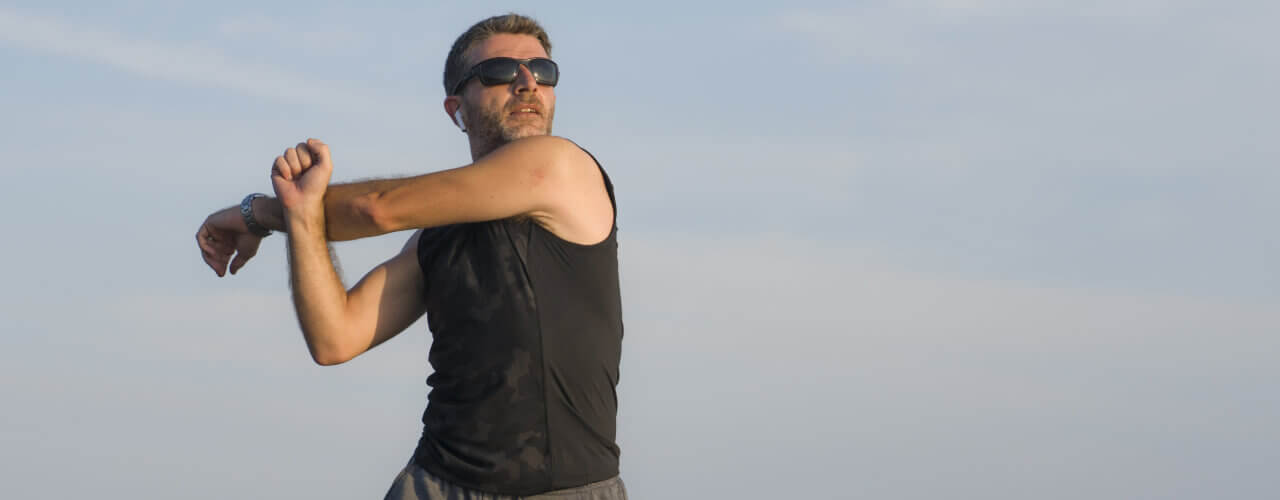When you begin a workout or physical therapy routine, you should complete a set of stretching exercises beforehand to help you limber up and prevent injuries. However, many people don’t receive any instructions on the proper way to go about stretching for their specific program. A licensed physical therapist can teach you how to complete the correct stretching exercises before you begin your workout. If you aren’t sure what direction to start, contact TheraFit™ today for more information!
To make sure that you can avoid hurting yourself, here are four types of stretching exercises and their health benefits to guide you!
Passive Stretches
When you think of stretching, you might tend to think of passive techniques. Whether the pose is held by hand or with gravity, one is largely stationary and exerts a force to extend the target muscle by reaching the outer limits of the range of motion.
Poses that can be held for a long time should signal to you that the muscle isn't reaching its outer capabilities, and warrant a gradual, deeper stretch. Toe touches are stretches meant to strengthen the hamstrings, but they are typically done incrementally.
Passive stretching is great for promoting overall balance and flexibility. The extension of muscles before intense exercise or activity can hinder explosive abilities, making it a better choice for cooling down after a workout rather than immediately prior to major exertion.
Active Stretches
Active stretching techniques require you to hold a position or pose using only the muscles in the corresponding group to the one being targeted. For example, consider an ankle being flexed back and forth. The calf muscles involved in holding your toes in a pointed position or raised toward the shin are referred to as the "agonist" and "antagonist," as they perform opposing functions. In any stretch, the agonist muscle is the one contracting, the antagonist is the one being extended.
Even though this technique can be applied all over the body, make sure to allow the limbs or joints in question to move naturally through their full range of motion, holding at each end. This is best for warming up before a physical activity, rather than lengthening the muscle as part of a proactive program to improve flexibility.
Proprioceptive Neuromuscular Facilitation Stretching
PNF stretching is a set of techniques most commonly utilized in a physical therapy or rehabilitation setting to restore range of motion to an injured or weakened muscle.
For PNF stretches, start by moving the specific limb or target muscle into a stretched position, and then contract that muscle group for 4-6 seconds while a helper or fixed object (like a wall or table) provides resistance that ensures nothing is moving. Release the contraction, and hold the stretched pose in place for 20-30 seconds before shaking loose and taking another 30-45 seconds to relax completely and then repeat in cycles.
By combining both passive and active elements, PNF stretching can be a highly effective choice, and create a safe set of exercises to aid in recovery.
Stretching is all about improving performance and preventing injury, so it's critical you understand when each one is necessary in order to really enjoy the benefits. You don’t want to get overconfident by moving too quickly in an attempt to speed up gradual improvements!
Dynamic Stretching
Dynamic stretching techniques are a bit more interactive because they put the body in motion. Dynamic techniques rely on momentum to flow through a series of repeated movements. One example is a hamstring stretch, in which the leg is kicked upward through its range of motion, and gradually increases in height with each pass.
One example of how dynamic stretching can be utilized in sports is a baseball player or preparing for a throwing motion. They would begin their shoulder warm-up with widening arm circles, expanding the range of motion little by little until the regular full range is accounted for.
It's important to know your limits when it comes to your own range of motion, as excess momentum can overextend the limb and cause a painful injury to be sustained.
Other Ways Stretching Can Benefit You
There are more ways that stretching can benefit you and help improve your overall performance and health. Healthline lists out a variety things in your life that can be made easier by a regular stretching routine:
- Improves posture
- Improves flexibility
- Helps to heal and prevent back pain
- Can calm your mind
- Helps decrease tension headaches
- Increases range of motion
- Improves your performance in physical activities
- Increases blood flow to your muscles
Contact Our Office Today
Whether you’re an athlete in need of some stretching guidance, or you just enjoy working out in your free time and want to make sure you’re avoiding possible injuries, physical therapy can help! One of our trained physical therapists here in the clinic will talk with you about your levels of physical activity and show you simple exercises to make sure you’re staying safe and in shape!

